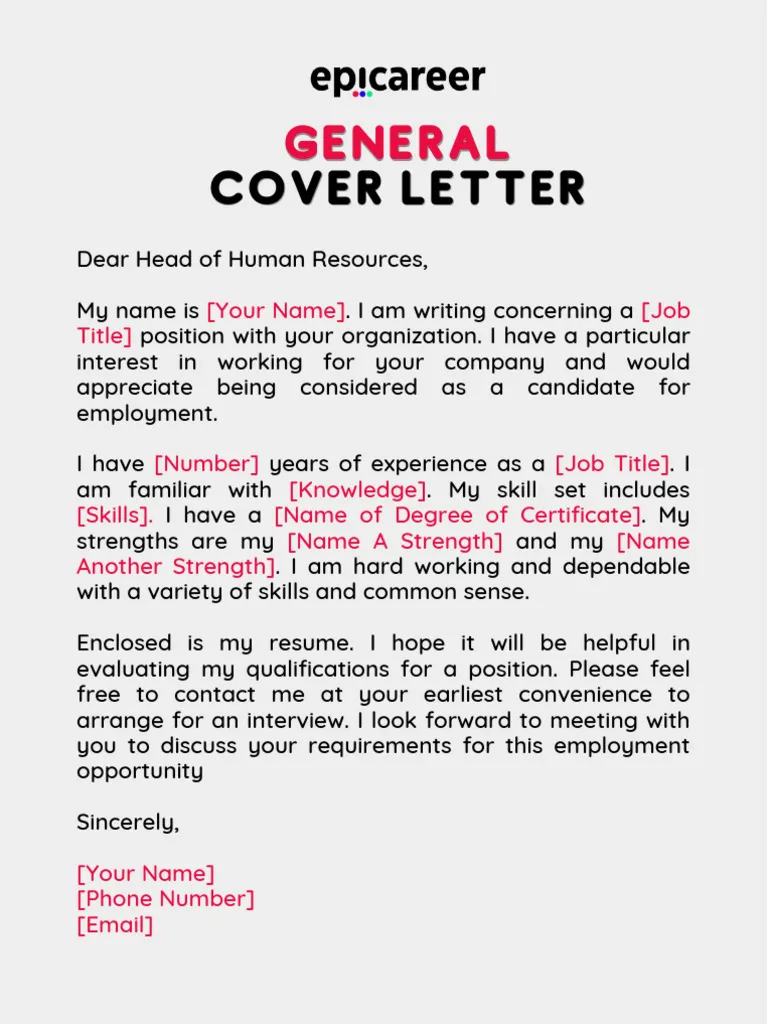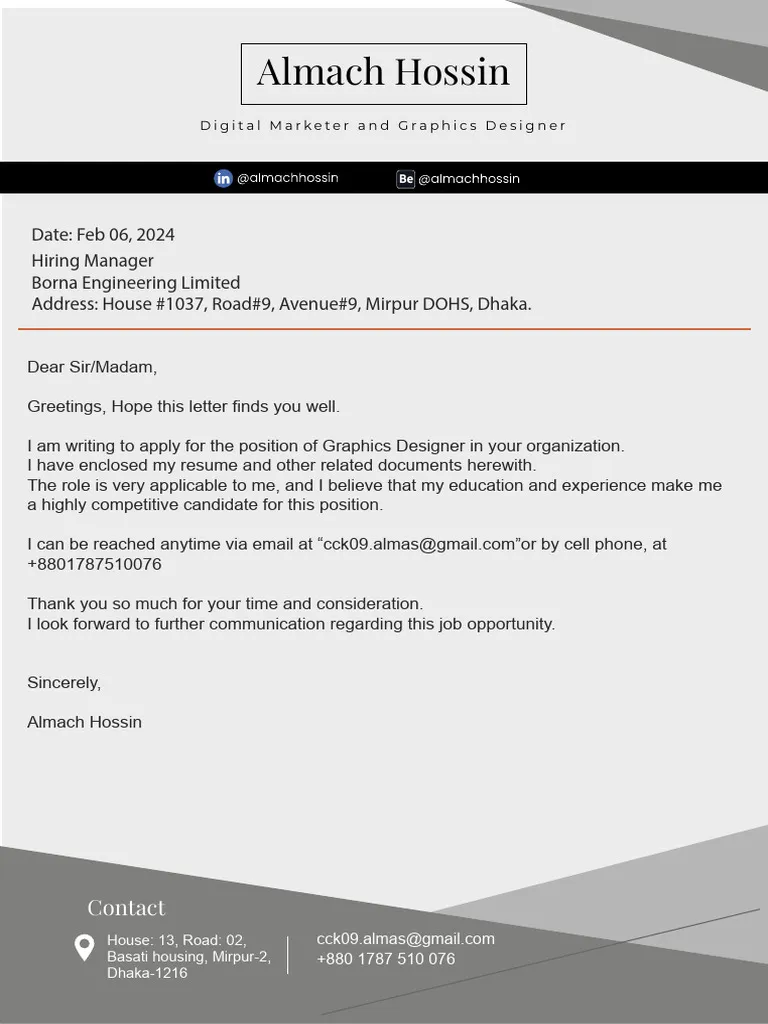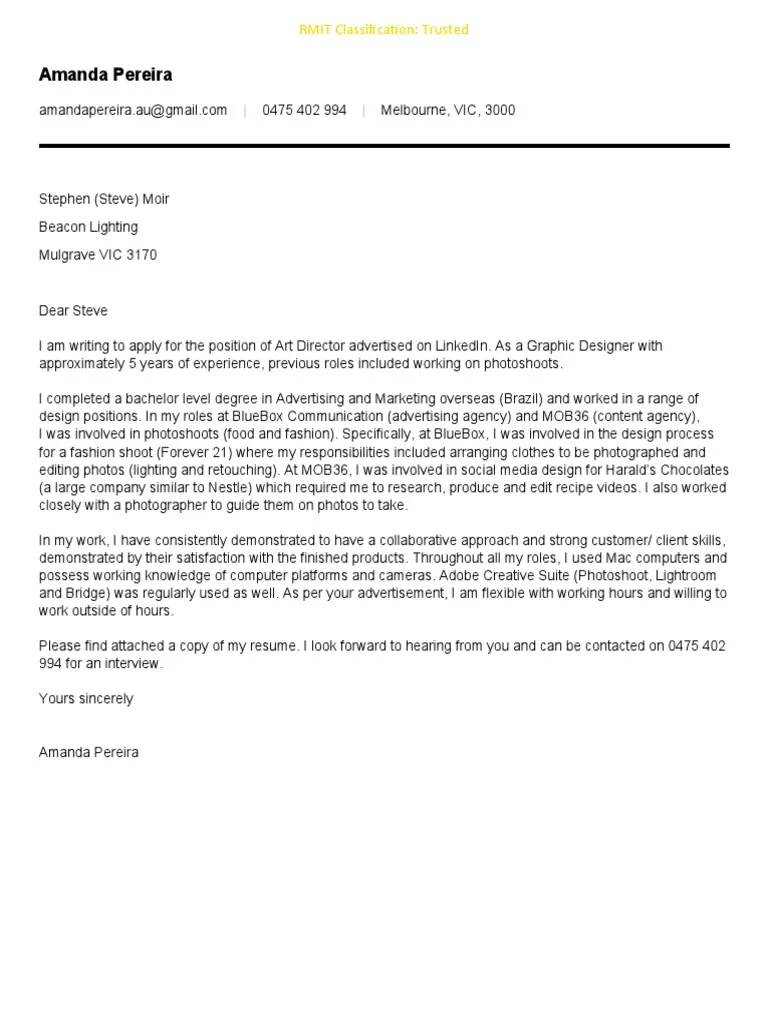Understanding the Purpose of a Cover Letter
A cover letter serves as your introduction to a potential employer, providing a personalized glimpse into your qualifications and suitability for a specific job. Unlike a resume, which offers a factual overview of your experience, a cover letter allows you to articulate your enthusiasm, explain why you are a good fit, and connect your skills to the employer’s needs. It’s your chance to showcase your personality, writing skills, and communication abilities. By effectively using a cover letter, you can create a strong first impression and increase your chances of moving to the next stage of the hiring process. This document isn’t just a formality; it’s a powerful tool for making a memorable impact and standing out from other applicants. Always remember to tailor your letter to each job, highlighting the skills and experiences most relevant to the position and company.
Why a Cover Letter Matters in Your Job Application
In the competitive job market, a cover letter can be the deciding factor in securing an interview. It offers a space to elaborate on your resume, explaining the ‘why’ behind your experiences and demonstrating a genuine interest in the role and the company. A well-written cover letter allows you to clarify gaps in your employment history, explain career transitions, and show how your skills align with the specific requirements of the job. It’s a chance to provide context, illustrate your problem-solving abilities, and communicate your value proposition. Recruiters and hiring managers often use cover letters to assess your writing and communication skills, attention to detail, and overall professionalism. Submitting a tailored cover letter, rather than a generic one, demonstrates your commitment and proactive approach, setting you apart from candidates who might only submit a resume.
Key Components of a Successful Cover Letter

A compelling cover letter consists of several essential components that work together to make a strong impression. Start with a professional heading that includes your contact information and the date. Address the letter to a specific person whenever possible; otherwise, use a formal salutation. The body should open with a captivating introductory paragraph stating the position you’re applying for and how you learned about it, along with a brief statement of your interest. The body should then detail your relevant skills, experience, and accomplishments, providing specific examples to support your claims. Tailor this section to the job requirements, using keywords from the job description. Conclude with a strong closing paragraph that reiterates your interest, summarizes your qualifications, and includes a call to action, such as requesting an interview. Finally, proofread meticulously and use a professional closing like ‘Sincerely’ or ‘Regards’, followed by your typed name.
Formatting Your Cover Letter for Maximum Impact
Effective formatting is critical for readability and impact. Choose a professional and easy-to-read font like Times New Roman, Arial, or Calibri in a size between 11 and 12 points. Ensure consistent formatting throughout the document, including consistent spacing and alignment. Use a clear and logical layout, breaking up text into short paragraphs to enhance readability. Employ bullet points to highlight key skills or achievements, but use them sparingly. Maintain a professional tone throughout the letter, avoiding slang or overly casual language. The length should ideally be one page. Using these formatting guidelines enhances the cover letter’s visual appeal and ensures that your message is easily understood by the hiring manager. Remember to keep your letter clean, organized, and easy to scan, as recruiters often quickly review applications.
Choosing the Right Font and Layout
The choice of font and layout is fundamental to a cover letter’s presentation. Opt for a font that’s professional and easy to read, such as Times New Roman, Arial, or Calibri. These fonts are widely recognized and provide a clean and clear appearance. The font size should typically range from 11 to 12 points for optimal readability. The layout should be clean and well-structured, with adequate margins on all sides. Use single-spacing within paragraphs and double-spacing between paragraphs to create visual breaks and improve readability. Left-align the text, except for the heading and closing, which can be right-aligned or centered. Ensure consistent spacing and alignment throughout the document. Proper formatting makes your cover letter visually appealing and helps the reader focus on the content rather than the layout.
Crafting a Compelling Opening Paragraph

The opening paragraph is your first opportunity to grab the reader’s attention and make a strong first impression. Start by clearly stating the position you’re applying for and where you saw the job posting. Then, immediately express your enthusiasm for the role and the company. Briefly mention a key skill or experience that aligns with the job requirements, or highlight a significant achievement that demonstrates your qualifications. Keep the paragraph concise and to the point, making sure to convey your excitement and interest. Tailor this opening to each job, avoiding generic introductions. This is your chance to hook the reader and encourage them to continue reading, demonstrating that you are a serious candidate. The goal is to immediately capture the reader’s attention and compel them to learn more about you.
Highlighting Your Skills and Experience
In the body of your cover letter, focus on highlighting your relevant skills and experiences, providing specific examples to support your claims. Carefully review the job description and identify the key skills and qualifications the employer is seeking. Tailor your cover letter to showcase how your skills and experiences align with these requirements. Use action verbs to describe your accomplishments and quantify your achievements whenever possible. Provide examples of how you’ve used your skills to solve problems, achieve results, or contribute to previous organizations. For each skill or experience you highlight, provide context and explain the impact of your actions. This section should demonstrate your value to the employer, providing concrete evidence of your capabilities. Use bullet points strategically to emphasize key points and make the content easy to scan.
Tailoring Your Cover Letter to the Job Description
Customizing your cover letter for each job application is critical for demonstrating that you’ve carefully considered the role and the company. Start by thoroughly reviewing the job description, identifying the key skills, qualifications, and requirements. Match your skills, experiences, and achievements to the specific needs of the position, using keywords from the job description. Tailor your language, tone, and examples to resonate with the employer’s expectations and values. Research the company and its culture to better understand its goals and objectives. Show how your skills and experiences align with the company’s mission. Customization shows that you’re not sending a generic application, but that you’ve invested time and effort into understanding the job and demonstrating why you’re a great fit. This proactive approach makes a lasting impression on hiring managers.
Using Keywords Effectively

Incorporating relevant keywords from the job description is a smart SEO practice. This helps your application get noticed by applicant tracking systems (ATS) and hiring managers. When reviewing the job description, identify the key skills, qualifications, and requirements, and then weave these terms naturally into your cover letter. Use these keywords throughout your letter to describe your skills and experiences, but avoid keyword stuffing. Focus on integrating the keywords seamlessly within the text. Don’t simply list keywords. Instead, use them within sentences that highlight your accomplishments and demonstrate your understanding of the job requirements. The goal is to optimize your application for both ATS and human readers. Focus on relevance and ensure that your use of keywords enhances, rather than detracts from, the readability of your letter.
Showcasing Your Achievements and Quantifiable Results
Highlighting your achievements is a powerful way to make your cover letter stand out. Instead of just listing your responsibilities, focus on the results you’ve achieved in previous roles. Whenever possible, quantify your accomplishments to provide concrete evidence of your impact. For example, instead of saying “Managed social media accounts,” state “Increased social media engagement by 30% in six months.” Use numbers and data to support your claims and demonstrate your value to potential employers. This allows hiring managers to quickly assess your contributions and understand your capabilities. Provide specific examples of how you’ve used your skills to solve problems, improve processes, or drive positive results. This will make your cover letter more persuasive and demonstrate your ability to deliver tangible results in the role you’re applying for. Use bullet points for easy readability.
Writing a Strong Closing Paragraph and Call to Action
The closing paragraph is your last opportunity to make a positive impression. Reiterate your interest in the position and summarize your key qualifications, emphasizing why you’re a strong fit. Thank the employer for their time and consideration. End with a clear call to action. This could involve requesting an interview, expressing your availability for a meeting, or stating your eagerness to discuss your qualifications further. Ensure the call to action is specific and encourages the reader to take the next step in the hiring process. Proofread your closing paragraph carefully to ensure it is professional and error-free. A strong closing paragraph leaves a lasting impression and increases the chances of your application moving to the next stage.
Proofreading and Editing Your Cover Letter

Proofreading and editing are essential to ensure your cover letter is polished and professional. Before submitting your cover letter, carefully review it for any grammatical errors, spelling mistakes, punctuation issues, and formatting inconsistencies. Read your cover letter aloud to catch errors that you might miss when reading silently. Check for clarity, conciseness, and flow. Ensure that your message is well-organized and easy to understand. Consider asking a friend, family member, or career counselor to review your cover letter and provide feedback. Multiple sets of eyes can help catch mistakes you might have overlooked. Proper proofreading and editing demonstrate your attention to detail and commitment to professionalism, significantly enhancing your application’s effectiveness. Always double-check all contact information and the recipient’s name.
Common Mistakes to Avoid in Your Cover Letter
There are several common mistakes that can weaken your cover letter and reduce your chances of getting hired. Avoid using generic or overly formal language. Refrain from repeating the information from your resume verbatim. Do not make your cover letter too long; keep it concise and focused. Avoid grammatical errors, spelling mistakes, and typos. Never send a cover letter that is not tailored to the specific job. Do not include negative information about previous employers. Avoid exaggerating your skills or experiences. Be mindful of the tone and ensure it’s professional and enthusiastic. By avoiding these common pitfalls, you can create a cover letter that effectively showcases your qualifications and makes a positive impression on potential employers.
Seeking Feedback and Refining Your Cover Letter
Seeking feedback and refining your cover letter is a crucial step in the application process. Ask trusted friends, family members, or career counselors to review your cover letter and provide constructive criticism. Be open to suggestions for improvement. Pay attention to their feedback on clarity, grammar, tone, and overall effectiveness. Use their insights to revise and refine your cover letter, making it as polished and effective as possible. Consider using online tools or professional writing services to get additional feedback and guidance. Continuously refine your cover letter until you’re confident that it effectively highlights your qualifications and demonstrates your enthusiasm for the role. This iterative process helps ensure your cover letter is tailored, well-written, and makes a strong impression on potential employers. The goal is to present the best possible version of yourself.
